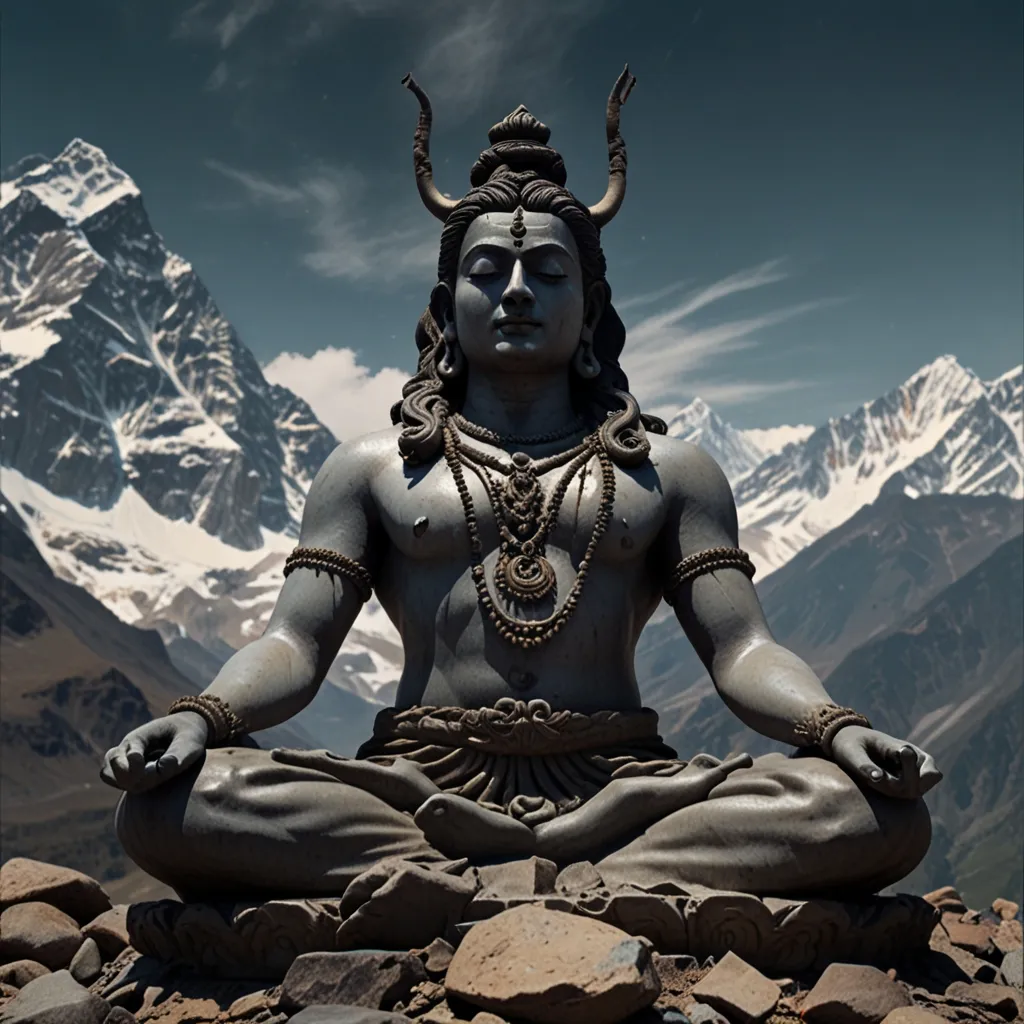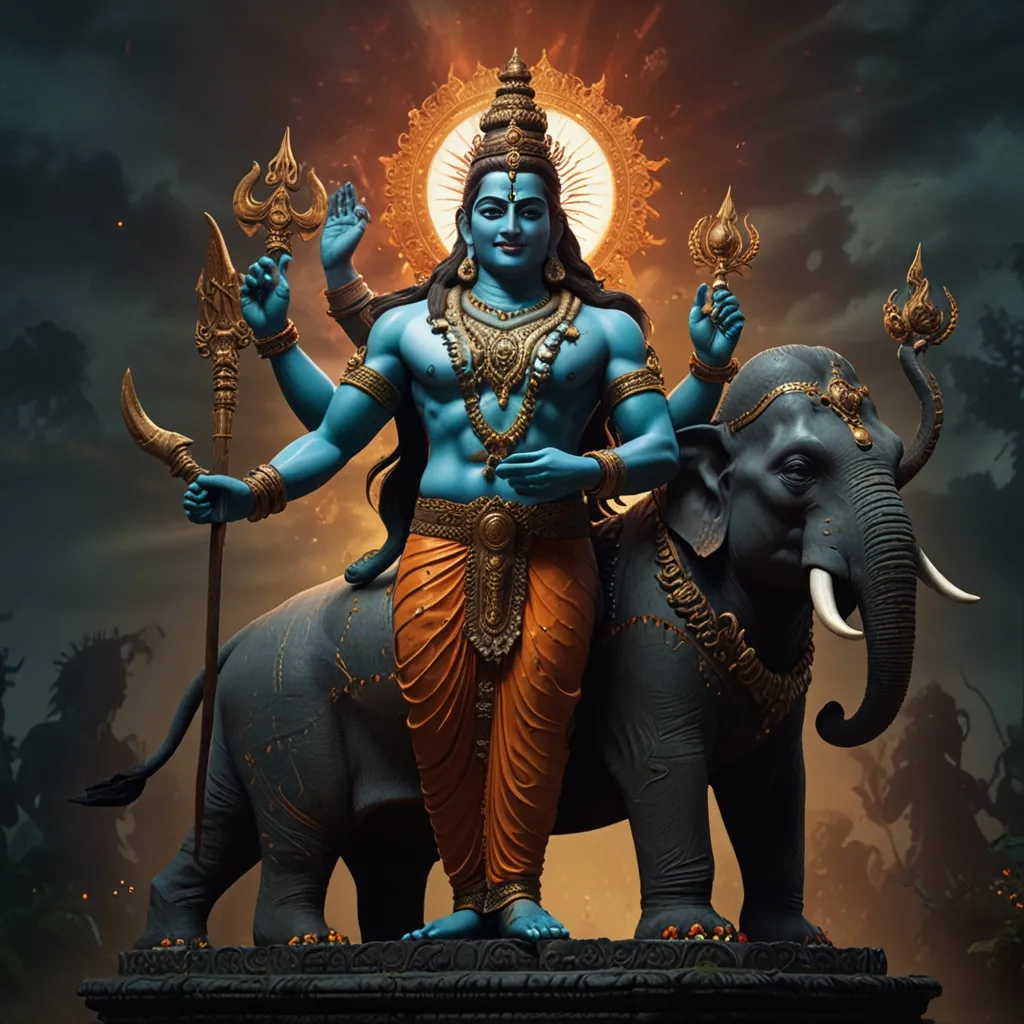In the world of Hindu mythology, few figures are as captivating as Sage Agastya. He’s a beacon of wisdom and devotion to Lord Shiva and left a significant mark on India’s spiritual and cultural history. His tale weaves a rich tapestry of myth, legend, and historical significance, creating a fascinating story that spans both time and space.
Agastya’s origin story is nothing short of remarkable. His father, the great sage Mitra-Varuna, was one of the seven revered sages of the Vedic age. Agastya was born through divine intervention, emerging from a pot, which gave him the name Agastya, translating to “born from a pot.” This unusual birth set the stage for his unique destiny.
One of the standout moments in his life is his marriage to Lopamudra. This wasn’t just any marriage; it was a spiritual partnership that boosted both their lives. Lopamudra, the daughter of Vidarbha’s king, was not just a devoted wife. She was a scholar and poet herself, contributing to the Vedic hymns that Agastya composed. Their son Dridhasyu was said to have been born reciting Vedic hymns, highlighting the divine legacy that flowed through the family.
Agastya is celebrated for his poetic contributions to the Rigveda, the oldest sacred texts of Hinduism. His hymns stand out for their poetic beauty and spiritual depth, often depicting the eternal tug-of-war between the gods Indra and Maruts, symbolizing the struggle between good and evil.
But one of the most jaw-dropping stories about Agastya is how he drank the ocean to expose hiding demons. Sounds impossible, right? But for Agastya, his yogic powers made it feasible. This act cemented his status as a protector of the divine order, making sure that evil didn’t hold sway.
A significant chapter in Agastya’s life was his journey south on Lord Shiva’s instructions. This wasn’t merely a physical journey but a spiritual quest to bring balance to the southern parts of India. Interestingly, his short and plump stature helped him in this quest, contrasting him with the often glorified tall and handsome sages in mythology. His divine communication skills and yogic prowess enabled him to overcome obstacles that dotted his path.
During the 14 years of Ram, Lakshman, and Sita’s exile, Agastya played host. He offered them refuge in the forest, and Lopamudra gifted Sita her divine ornaments, deepening the bond between them. Guided by Agastya, Ram and Lakshman built an ashram by the Godavari River, further intertwining their fates.
Agastya’s encounters with demons further highlight his bravery and spiritual strength. His victory over Vatapi and Ilvala, notorious for terrorizing people, brought peace and underscored his role as a demon-slayer, marking yet another feather in his already illustrious cap.
But Agastya wasn’t just about poetry and spiritual quests. He’s also credited with founding Silambam, an ancient martial art form from Tamil Nadu that emphasizes varmam points for both healing and combat. This tradition has been passed down through generations and remains a significant part of India’s cultural heritage.
Agastya’s influence also permeates through the realms of literature. He is considered one of the siddhars—ancient sages who shaped Tamil literature and grammar. His contributions to the Tamil language still resonate, making him a key figure in the evolution of Tamil culture.
Besides martial arts and literature, Agastya is celebrated for his healing knowledge. He was a renowned healer who shared wisdom about medicinal plants and holistic health practices. His teachings on yoga and mystical powers known as siddhis continue to inspire spiritual seekers to this day.
Agastya’s legacy is a testament to the power of myth and spirituality. His life, packed with extraordinary feats and deep wisdom, continuously inspires generations. Whether through literature, martial arts, or medicine, his contributions have left an indelible imprint on Indian culture.
Ultimately, Agastya’s story is more than just myth or history—it’s a spiritual journey that transcends time and space. It’s a powerful reminder of the transformative strength of devotion, wisdom, and the human spirit, urging everyone to push the boundaries of what’s possible.
So the next time you hear tales of ancient sages, remember Sage Agastya. His multifaceted life is a standing example of how one can excel in diverse fields while staying deeply rooted in spiritual principles. His life story is an inspiring blend of the extraordinary and the profound, capable of touching hearts and minds across generations.






